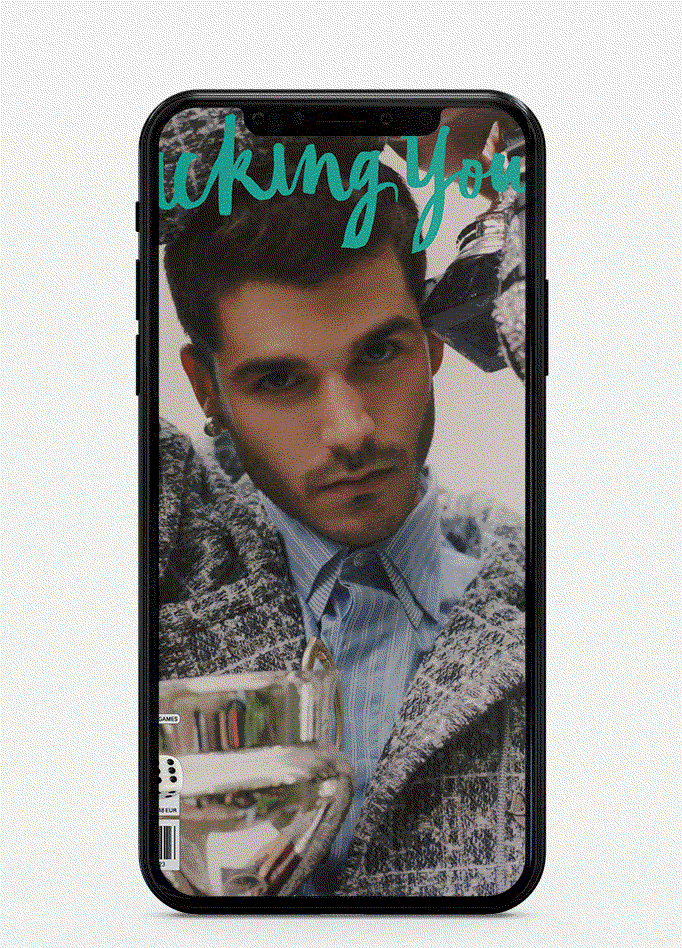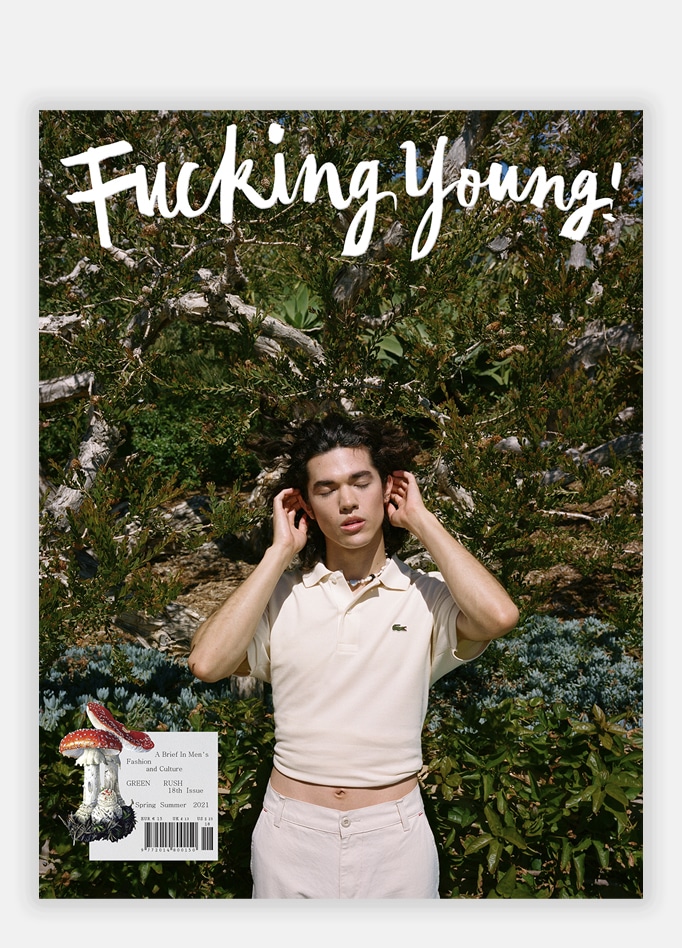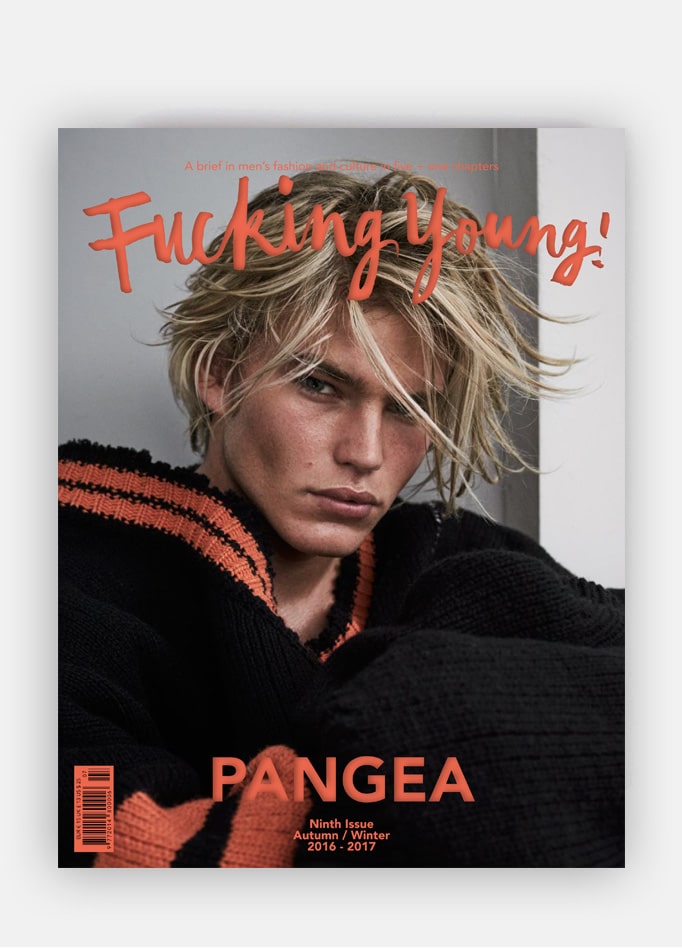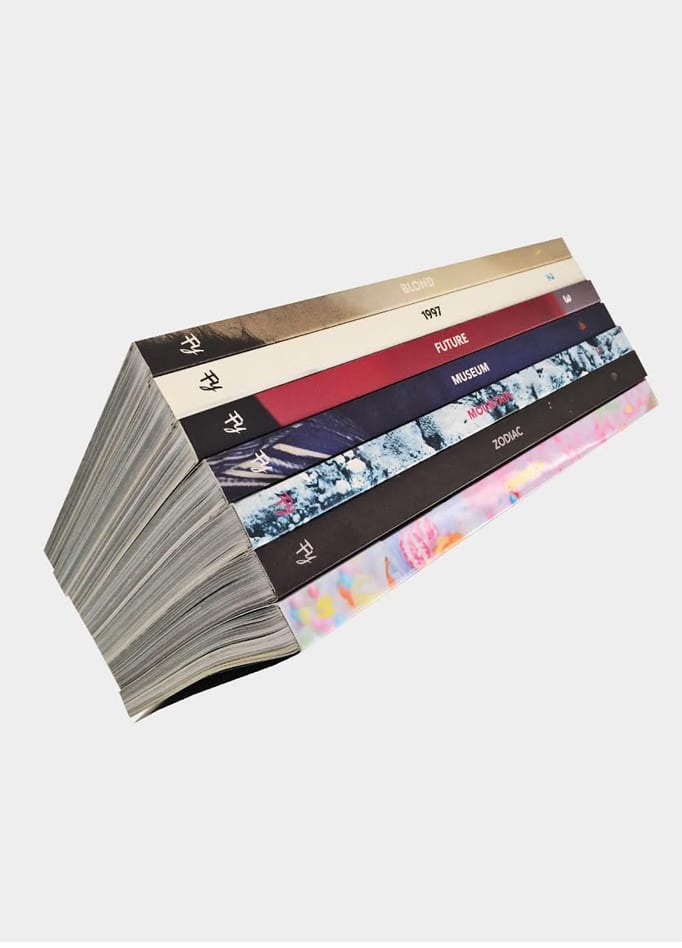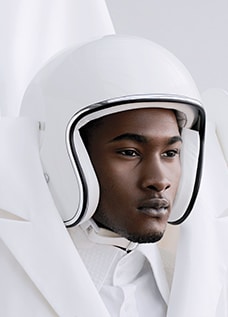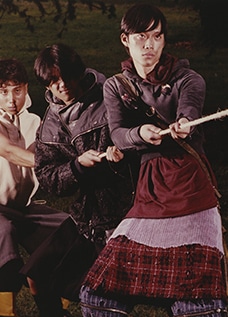There is something in the air tonight. And no, it ain’t good ole’ Phil Collins. We can sense some movement in New York. Something is changing here. Long lagging behind the sartorial quirk of London and often lacking some Parisian chic, the East-Coast is finally kicking back. When it comes to hunting down high spirited voices that embody everything that we believe in here at Fucking Young!: NYC always was our logical next stop. As we all know, this city has more faces than you could ever imagine; so one has to look well in order to spot true magic. And when you finally do stumble upon it, it is so powerful, that nothing can stand in its way!
From the moment you meet Mr. Abdul Abasi and Mr. Greg Rosborough, you feel instinctively drawn to their heartfelt universe. These are no mediocre fashion choir preachers. Both come as well seasoned as one can hope for. When they finally met, already no longer newbies, it was only natural for them to lock hands and create: ABASI-ROSBOROUGH. Think mean tailoring, acute construction, supersensible fabrics and a banging feel of quality, this may be the new definition of ‘nowness’. Oh yes, menswear needs these guys. Like a couple of wise 21st-century mages, they roam amidst grey skyscrapers, deconstructing our stale perception of suiting. Here this wardrobe staple is invigorated and comes in extremely well-executed drops, that invite the wearer in, on an exploration of our world and ourselves. No blah blah, Greg and Abdul make garments for people on the move, in our increasingly connected world. So do dig into some guaranteed fuss-free, clean as f##CK storytelling, courtesy Abdul and Greg!!!

A-Z. Hey Greg, could you tell me about you as a young man, back home in Arizona, what were you interested in, what triggered you to pick up design?
GR: I was a shy but smart kid growing up in the Arizona desert and my dad is a basketball coach and so I always played because that is what I knew. My mom is an interior designer and so when my brother and I were not busy playing basketball, she would put us on creative projects and tried to stimulate us in that way. The real inspiration moment for design came from the first time I visited New York City when I was 18. It was the first time I ever put on an interestingly designed coat and began to understand some connection between clothes and identity. I knew that there was a psychological change happening when I put on a garment that was designed in a special way. In many ways, this is the same with basketball, in that you put on a uniform and assume an identity. At the time it was something new and interesting, this idea of designing and communicating through clothing.
OO-RAH. Welcome too, Abdul! As a youngster you joined the US Army, I am sure everything has been said about this, but what did you take from this experience on a personal level?
AA: My time in the military allowed me to see the world and find myself. It was a great experience because I was able to learn that I could push past my limits and that I could do anything I put my mind to.
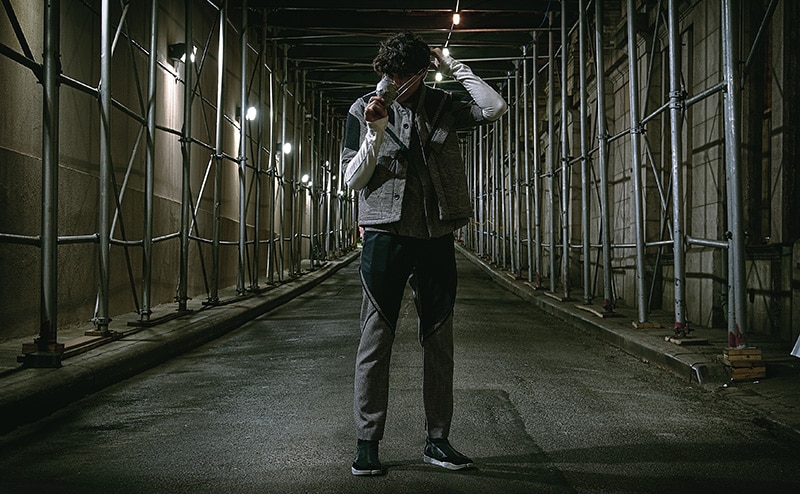
N-Y- C. So as young adults, after Arizona and the military, you guys finally met, at the design behemoth that is F.I.T?
GR: You are right, I think it was on the first day of design school that we met. We had to go around the class and introduce ourselves and say where we had been prior to school. So Abdul walked up and he said something like “I’m Abdul Abasi and I was in the United States military for the last eight years, serving for NATO in the Netherlands.” And that was one of those moments where you certainly remember that individual because it was so unlike any other story in the class. From there, we had to design and present in front of the class and Abdul always had this great enthusiasm and positive outlook He thought of design as problem-solving, which is similar to how I thought about it. He also always considered military aspects of design – in the military clothes are designed to save your life on the battlefield, they have a purpose – and I like that he did all this purpose-based design. We basically always kept in touch.
A-PART. So you each headed out on your own path for a while. What values did you both pick up individually along the way, after your graduation from F.I.T?
GR: As I designer, I realized that I did not want to continuously reference things that have already been designed before. I wanted to look forward instead of always looking back into archives, searching through vintage. I kept thinking the designers of the past would be disappointed to know that the designers of the future only copied their work for new ideas – it lacked progression. And I kept thinking that in my lifetime I would love to see design evolve, change and improve and I did not really see anyone else in the industry doing the ideas that I had in my head.
AA: After graduating from FIT, I started working at Engineered Garments. There I learned about the attention to detail and the integrity that goes into great design. I also gained an affinity for soulful, functional and useful garments.
GR: For me, it was slightly different. At this time, I was doing research about the history of the men’s suit and found that it was originally designed in 1860. So upon discovering this, I thought it was quite disappointing that in 150 years no designer had meaningfully changed the design of the suit. Every day on the subway or when driving a car or journeying on a plane, I would observe that today’s suit could not accommodate the movements of the modern man. And so I thought about combining my background in sport and Abdul’s background in the military and functionality, that we could combine those ideas to create a suit for the 21st-century – that was the initial idea and that we came up with that day we met for coffee.

LA-DI- DA. So that coffee finally happened, after those years with Adbul at Patrik Ervell and Engineered Garments and Greg at Polo + Nike. This must have been a beautiful moment…..
GR: Haha, well it started with actually tracking Abdul down! First, I had lost his phone number and did not have his current email address and had to get back in touch with some friends from design school to get ahold of him. Then we met up for coffee – it was a good reunion, good to see an old friend from school and we ended up having a discussion about design ideas, and history, and the future. We were completely on the same wavelength. It was one of those conversations that you leave and you are excited about it, and you want to talk more. So we started working together as friends working on a project together, not yet as a business idea.
AA: It was a good moment. Joining forces was a great way for Greg and me to finally create Abasi Rosborough. It is often said that: two heads are better than one. Whenever we approach a design problem we can look at it from two different angles, to come up with the best solution.
SYNERGY. Abdul. So what unique skill do you feel Greg has brought to the mix from that beginning?
AA: Greg has this great business acumen, organizational skills, and a phenomenal work ethic. He is also a pragmatic problem solver.
ENERGY. And Greg, what do you admire most about Abdul?
GR: He is truly an individual and a deep thinker, and pushes himself to improve and build upon our design work. And even though it has taken a few years for us to get to this point, he has always maintained a positive outlook and has been a fantastic partner in crime.
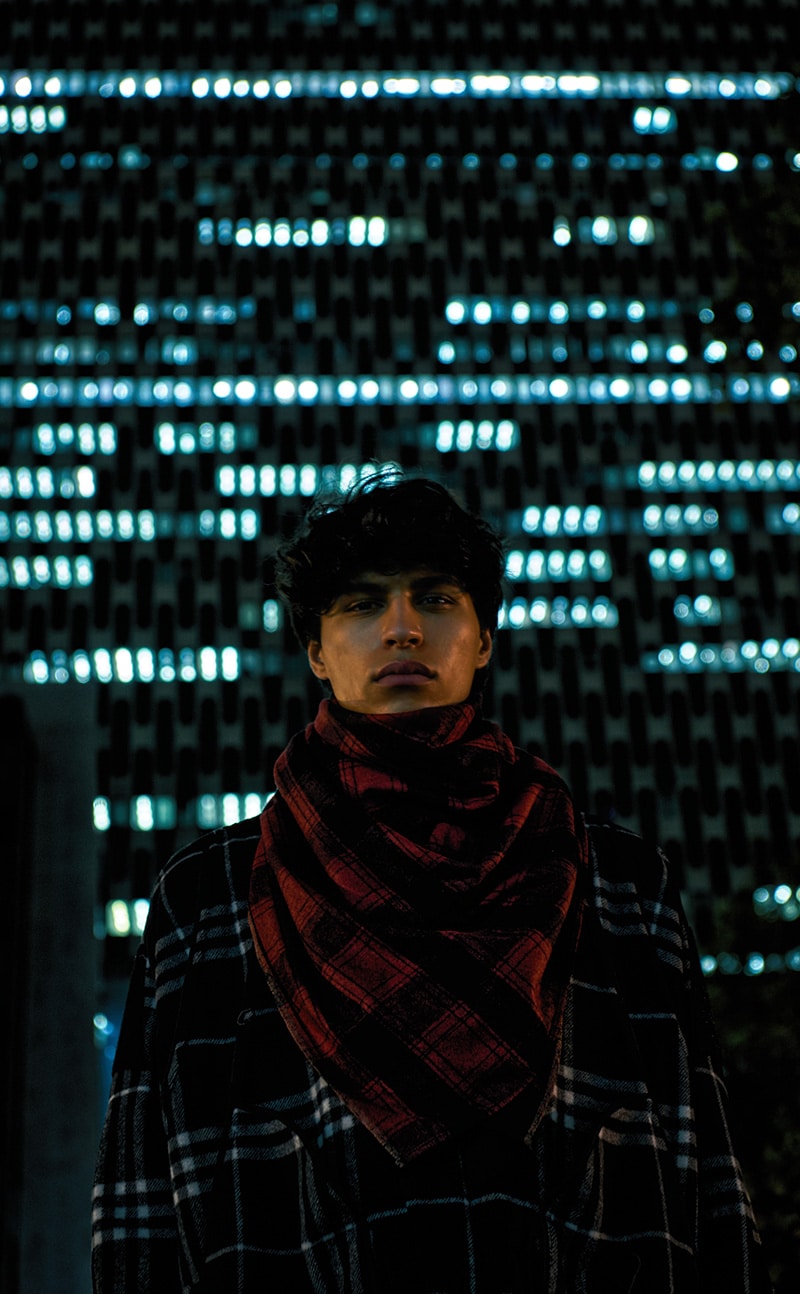
GARMENT DISTRICT. I would also like to speak of the first garment you actually made together, as your work is all about deep fabric research, dead-stock, structure, and tailoring. What did you end up crafting?
GR: The first garments we were making were our version of a re-engineered suit jacket. Since we had studied tailoring and are purists, we wanted to make sure that the tailored jackets had the correct horsehair at the chest, and the appropriate hand tailoring in shaping on the collar and the lapel. But we also wanted to give the jacket flexibility and movement, and so we applied paneling all over the garment. For this, we chose to use natural fiber fabrics from the beginning as a result of a conversation with Daiki Suzuki (ed. founder Engineered Garments).
Once we had the first jacket, we went back to FIT and showed it to our tailoring professor because we wanted to get his stamp of approval. He was in his 70s and had been making suits the same way since he was 13 years old. We showed him and he inspected it and in his own way, he acknowledged that we had done something interesting. He felt that we had put new ideas into the classic suit jacket that no one had done before. Historically, the suit jacket is like an unbreakable archetype and so to change it in a way that what was functional was quite impressive to him. It was an incredible moment for us and gave us a lot of confidence to pursue this project into a business.
COLLECTOR. Many collections have since followed. So, Greg, if you had to indicate the development of the work and had to explain your concept to our readers, who might see you work for the first time, how would you go about this?
GR: Sure thing! With us, everything is designed from observing exterior interaction. We start with the body, studying movement, muscle structure and then develop the garments around these. We build in comfort and functionality. Everything is hard-wearing and built for the city. We reference architecture and global cultures. We try to balance things looking both primitive and modern. The collections are iterative so we design in progressive stages, as opposed to throwing out everything every season and starting over. Everything is made out of natural fibers, entirely New York City and is made ethically.
RE-COMPOSE. Abdul, when we met in Paris, we spoke much about the social aspect of the clothes. Yes, they are just clothes, but you work a lot with recycling, societal commentary, and quality that endures. Could you comment a little on the current Fast-Fashion cycle?
AA: Of course. Well, the fast fashion cycle is a result of materialism and mass consumption. In order to improve things, we must be fully transparent about the process and the true cost of fast-fashion. We must also be mindful and think about how our over-consumption negatively impacts our environment. Our generation must be educated to be content with what we have and take only what we need.
DEVIL WORSHIPPER. Your work is all about ‘‘functional’’ details. Many greats from Eames, to Ando, to Dieter Rams or Daiki Suzuki and Paul Harnden would agree on this. What does the ‘‘detail’’ mean to you?
AA: Details are the finishing touches of the design. It is the meticulous and systematic process of going from broad to specific. The details reveal the purity and the essence of the expression in its total form.
GR: There is a great quote which is “the details are not the details, they make the design.” When creating something new, innately there is a feeling to normalize the idea, to make it more acceptable to a wider audience. We think in a problem-solving capacity and so we have to reject those feelings to normalize and instead think “let’s just make it the best that it can be.” Details flow from that line of thinking. Also, when you think about your favorite jacket or chair or building or anything, the specific little signatures are the things you remember and cherish. They bring something to life and give it a soul – we try to embrace those notions.
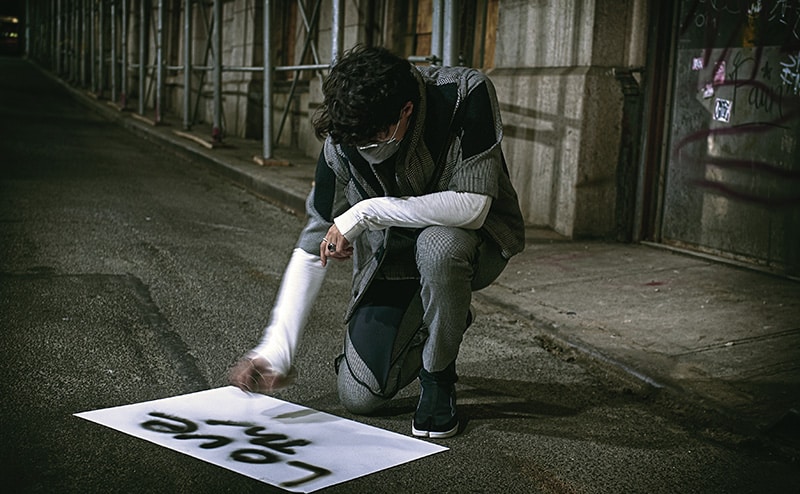
BE ME. NEVER YOU. Clothes also may want to convey a message of identity. Greg, could you explain a little, how you go about the highly personal feeling your clothes have and why do you care so deeply for this emotion within the garments?
GR: Great question! This goes back to the beginning and why I wanted to become a designer. Everything that we wear communicates something about who we are, what we are thinking, what we do. Even if you say that you don’t care, you still have to wear clothing to participate in society in some form and therefore you say something about yourself by not caring.
I think for those of us who live in cities and are working to survive through the highs and lows of urban life by communicating our ideas, our clothing is a big deal to us. Not in a superficial way or an expensive way, but in a conscious, considered way. We all moved from somewhere to the cities, to pursue our dreams and our individuality and put ourselves to the test of culture. In the city more often than not you do not have a car – your clothing is your vehicle, your clothing is your armor, your clothing is your statement, your colors are your feelings, your silhouette is your mood – whether you are in fashion, finance, or anything else. You dress because you respect the people around you and you dress because you respect yourself!
IGNITION. To ignite your work, there must be a starting point, could you explain the framework of references you explored (and I can imagine how wide they must be!), especially for the garments we feature alongside this conversation?
AA: Our collections always begin with a dialogue. We are interested in pulling ideas from our emotions and intuition. The collection that you will see in this campaign features images, inspired by protest culture and the uniforms of law-enforcement. We envisioned the uniform of the protester. In this editorial we explorer the key themes of dissension, activism, and unity. This is the message we chose to convey for this conversation!
GR: If I can add onto this. The designing of this collection took place a year ago in the fall of 2016. During this time there were many protests in the US for the Black Lives Matter movement, the Dakota Access Pipeline protest and the largest of all – the US election. And so we wanted to create something that felt strong and like armor, for all these protesters we are seeing on the streets and on TV, something that felt rebellious, armored, and fearless. Red is the color of passion, blood, rage, power and it was an appropriate starting point for the collection. We loved red tartans for their connotation with true rebels of the past. We wanted to do heavy things that were built and reinforced and strong. So that any person who put them on would feel powerful enough to speak their mind. And that was the idea for the collection.
TUNE-OUT. This means a super lucid idea, also visually begin your work, which is not often the case. How do go about making these editorials?
AA: Greg and I create the all images for Abasi Rosborough ourselves. This is because it is the most sincere expression of our brand. Our intention is not to simply make a beautiful image, we aim to create content that provokes thought.
GR: Abdul, I would like to add two more reasons: the first was a necessity. When we started, we wanted to create visuals and tell our own story and did not have a budget to hire photographers, so indeed Abdul started shooting for us. He did a great job and so we continued to shoot with him. The other reason is for the continuity of story: we put so much intention, deliberation and thought into the fabric selection and the silhouettes + details, but to tell the full story a designer has to show the garments in a person, in a context.
Also, we have always liked reading about designers or creatives who are the full package and can photograph and style their own work, because they have an image in their head and can translate it in a pure way. And we wanted to do the same. We had all the ideas – why should we not communicate them on every level? We try to create visuals that we think are new. Most often the backdrop is our hometown, New York City, where we live. We aspire to create visuals that are both minimal but also monumental in terms of what they convey.
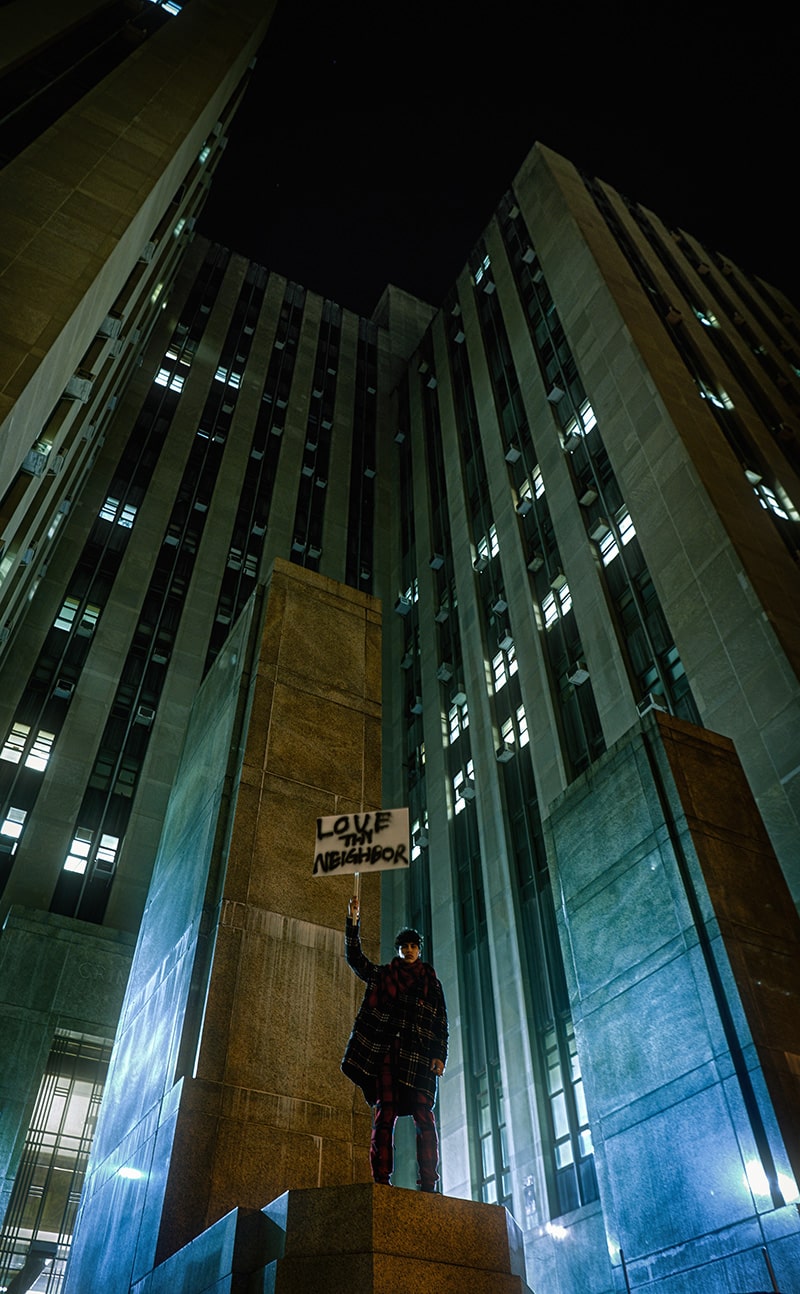
SNOOZE. This deep immersive process of design must also mean a need for disconnection. Greg, where do you go, for some silent reflection?
GR: On a day-to-day basis, I take my dog for a walk. And when I can, I try to get out of the city. For instance, I love to go hiking with my brother in New York or Arizona, or wherever we can.
ALARM CLOCK. Abdul, how can you best re-set your mind after the intensive bi-annual pilgrimages to Paris?
AA: Personally, I choose to reset by exercise and meditation. Next to this, I also enjoy visiting museums and art galleries.
WAKE.UP. Lastly, could you both share some sage words to aspiring creatives, perhaps straight out of school, or roaming around for ideas? What should they do, invest in, leave alone, reach for?
GR: Nothing will ever take the place of persistent, inspired work. There will be a million reasons to give up when you are starting out, least of all of these being money. However, you have to persevere through those challenges. Always try to find a good partner, reliable family member or friend who can help you bounce back in those first years that are hard. And simply just keep going. The only thing that will give your work any meaning is time. It all comes in layers and slowly and any other pace is unnatural and unsustainable. I would also say you always need to be the very best version of you. Your story, where you are from, how you do things, those are all very specific and therefore unique to you.
AA: I will keep it short: Stay curious. Never stop learning.














